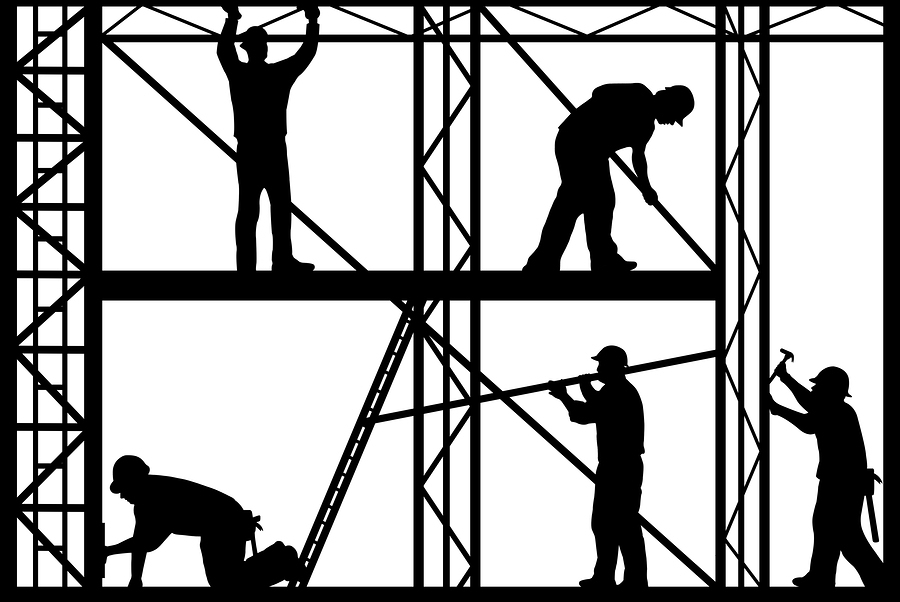Construction workers are at risk for musculoskeletal injuries on the job. Working in confined spaces and doing repetitive movements as well as lifting heavy objects are reasons this may occur. Taking safety precautions while at work help to reduce such injuries. Using ergonomic principles, a worker is able to look at routine tasks in a different way. Performing the tasks while keeping the body aligned and using body mechanics to reduce pressure on joints and muscles helps reduce injuries.
Incidence of Musculoskeletal Injuries
Musculoskeletal injuries affect the way the body moves. Such injuries involve the tendons, ligaments, muscles, cartilage and joints as well as the nerves and blood vessels in the supporting tissues. These injuries are common for construction workers. Overall, the incidence of musculoskeletal injuries declined slightly in 2013, but such disorders still accounted for 33 percent of all injuries. Musculoskeletal injuries accounted for 35.8 days lost at work. For construction workers, there were more than 40 cases per 10,000 workers in 2013.
Safety Measures
Employers are obligated to provide a safe working environment. This involves alerting workers to unsafe conditions as well as preventing accidents by keeping the site free of obstacles or danger-causing situations. Making sure that equipment at the work site is maintained and proper usage is preserved helps. Beyond this, encouraging workers to learn and apply ergonomic principles to everyday tasks is important.

Using ergonomic principles helps avoids injury.
Ergonomic Principles
The body relies on proper alignment to prevent injury. When workers learn such principles and use them, the workers are less likely to incur musculoskeletal injury. Using ergonomic principles involves understanding proper body alignment and performing routine tasks with that in mind.
Learning How to Lift Objects
Lifting heavy objects can put stress on muscles and joints if done without adhering to ergonomic principles. For instance, bending at the waist to pick something up puts all the strain on the back muscles and joints. Bending your knees and lifting the object with the help of leg muscles is a better and safer way to do it. Keeping one foot slightly in front of the other promotes balance.
Getting Down to Work Level
When working at a job low to the ground, kneeling or squatting can take its toll on the back, waist or knees. Using a stool that is study provides a better option.
Using Your Wrists Naturally
Maintaining the natural wrist position as much as possible is a good way of preventing damage to the wrists tendons, ligaments and nerves. The natural position is with the wrist extended with the hand rotated 30 to 60 degrees with the fingers slightly curled with a straight thumb. Maintaining a position that reflects this as much as possible prevents strain and may help prevent carpal tunnel syndrome.
Choosing the Right Tools
Tools, whether power or manual, help get the job done. Holding a tool for a long time increases pressure and can result in static load. Examples of this include holding any tool for long periods or working overhead. Using aids, such as a clamp that holds objects in place, or using a tool extender when working overhead may help. Power tools reduce repetitive movement but may cause vibration. Using ergonomically designed tools may reduce fatigue.

Balancing tools on a work belt reduces muscle strain.
Balance Is Everything
Using body-positioning techniques to maintain proper balance is vital to preserving body alignment. The same principles apply to a work belt. Overloading one side causes strain to the muscles on that side. Distributing tools evenly helps avert this.
These five ways for construction workers to stay healthy on the job using
ergonomic principles are important since reducing time away from work is vital. Other considerations such as inclement weather should be considered . Home inspection courses provided by the Massachusetts Contractors Academy target ways to work safe and help you successfully take the home inspection certification exam.
